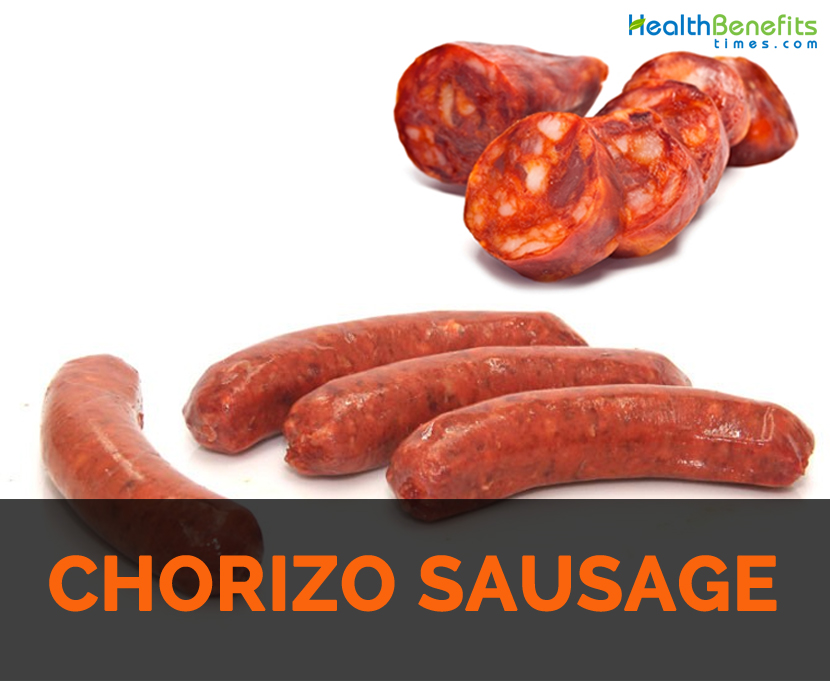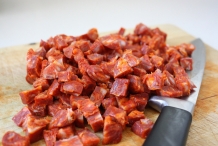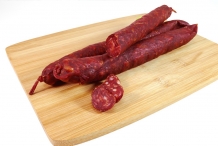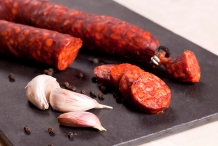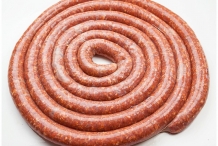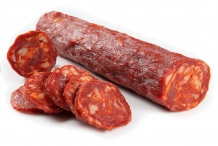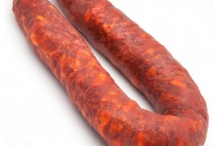Due to the high cost of imported Spanish smoked paprika and culinary tradition, Mexican chorizo is made with inherent chili pepper of species Capsicum annum and rarely used in Mexican cuisine. Chorizo could be consumed sliced grilled, in a sandwich, simmered in liquid such as apple cider or other alcoholic beverages or fried. It could be used as toppings for pizza like pepperoni and salami.
It is made from pork fat and chopped pork, seasoned with pimento- salt and smoked paprika. Generally, it could be classed as either dulce or picante which depends upon type of pimenton used. It is made in long or short and soft or hard varieties. The varieties which are lean could be consumed as tapas or appetizers at room temperatures. Fattier varieties are used for cooking purposes. Thin and long chorizos are sweet whereas short ones are spicy.
History
The origins of traditional sausages are hard to trace. The preservation of meat has been done so long due to which its origin have been lost. Probably, Chorizo could be originated from xorico in Catalonia. It has distinctive flavor as well as color that are caused by addition of copious amount of paprika. These peppers are inherent to South America and Central America, so modern chorizo is made after Europeans found New World.
How to Eat
- It could be consumed sliced in a sandwich.
- Chorizo can be fried, grilled or simmered in liquid such as apple cider and other strong alcoholic beverages.
- Use it as toppings for pizza similar to pepperoni and salami.
- It could be used as a substitute for pork and ground beef.
- It is a predominant in Spanish, Portuguese and Brazilian cuisines.
- It is used to add flavor to soups and sandwiches.
References:
https://en.wikipedia.org/wiki/Chorizo
http://www.jamonarium.com/en/content/58-spanish-chorizo-the-tradition
http://blog.nh-hotels.com/countries/partonechorizo/
https://healthyliving.azcentral.com/benefits-chorizo-17601.html
Comments
| Chorizo sausage Quick Facts | |
|---|---|
| Name: | Chorizo sausage |
| Origin | Spain, Portugal |
| Colors | Rich red |
| Calories | 84 Kcal./cup |
| Major nutrients | Vitamin B-12 (23.75%) Total Fat (20.34%) Sodium (14.87%) Vitamin B3 (9.69%) Selenium (9.64%) |
| Name | Chorizo sausage |
|---|---|
| Place of origin | Spain, Portugal |
| Common/English Name | Chouriço |
| Name in Other Languages | Asturian: chorizo; Catalan: xoriço; Basque: txorizo ; Portuguese: chouriço; Galician: chourizo; Spanish: chorizo |
| Main ingredients | Pork, paprika |
| Course | Sausage |
| Color | Rich red |
| Flavor | Tangy, smoky |
| Major Nutritions | Vitamin B-12 (Cobalamine) 0.57 µg (23.75%) Total Fat (lipid) 7.12 g (20.34%) Sodium, Na 223 mg (14.87%) Vitamin B3 (Niacin) 1.551 mg (9.69%) Selenium, Se 5.3 µg (9.64%) Protein 3.86 g (7.72%) Vitamin B6 (Pyridoxine) 0.089 mg (6.85%) Vitamin B2 (Riboflavin) 0.088 mg (6.77%) Phosphorus, P 42 mg (6.00%) Iron, Fe 0.4 mg (5.00%) |
| Calories in 1 oz (28.35 g) | 84 Kcal. |


